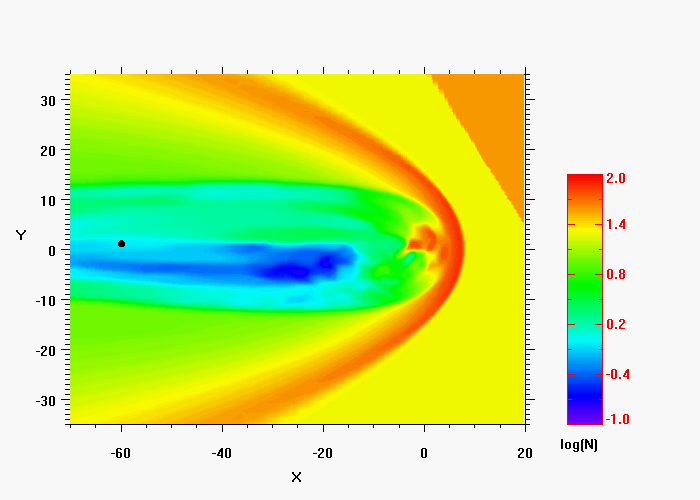The study will help scientists and engineers prepare for future lunar missions, particularly the crewed missions planned by major space agencies in the coming decades.
The Sun creates a stream of charged particles (plasma) called the solar wind which can cause problems for satellites and for humans in space. The Earth is protected from the solar wind, by a magnetic bubble called the magnetosphere which screens and deflects the high-speed particles around the Earth. The solar wind causes the magnetosphere to stretch out around the Earth and away from the Sun like a wind sock, which is driven by variations in the solar wind (space weather).
As it orbits the Earth, the Moon passes in and out of the stretched out tail of the magnetosphere. It spends about 25% of its time behind the Earth in the full moon phase and had, until now, been thought to be protected by the magnetosphere. New research, published in the Journal of Geophysical Research: Space Physics, shows that's not always the case.
Prof Malcolm Dunlop, magnetospheric theme leader at RAL Space and one of the study's authors said: “The research conducted by my colleagues at Shandong University and I has shown that the tail of the magnetosphere flaps in the solar wind much closer to the Earth than we had previously observed. In times of high solar activity, the solar wind can be much stronger than normal with enough pressure to change the shape of the magnetosphere. We have shown that this can expose the Moon, even when it is directly behind the Earth."
The new discovery used a combination of NASA and ESA spacecraft situated between the Earth and the Sun, while the NASA THEMIS-ARTEMIS spacecraft located near the moon measured the changing environment at the moon.
The international team of scientists identified a large solar wind 'gust', known as an interplanetary shock wave, by analysing ARTEMIS observations from March 2012. In this period, the solar wind speed doubled and impacted at an oblique angle. The magnetosphere shift lasted over an hour and the Moon was bombarded for about 30 minutes.
“This surprise deflection and exposure during a full moon demonstrates that lunar astronauts and infrastructure aren't reliably protected by Earth's magnetic shield," said Prof. Quanqi Shi of Shandong University, who is the corresponding author on the paper. “We hope this discovery will lead to an updated model of the dynamic lunar environment, which could offer a safety buffer to warn lunar crews before the impact of dangerous solar particles."

Image: Computer simulation corresponding to ARTEMIS data, showing the solar wind shock wave impact (orange) and resulting magnetosphere (green-blue) compression and deflection across the moon (black dot). Credit: Q.Q. Shi, Shandong University
The full paper can be accessed from the Journal of Geophysical Research: Space Physics
Further information is available from NASA.
